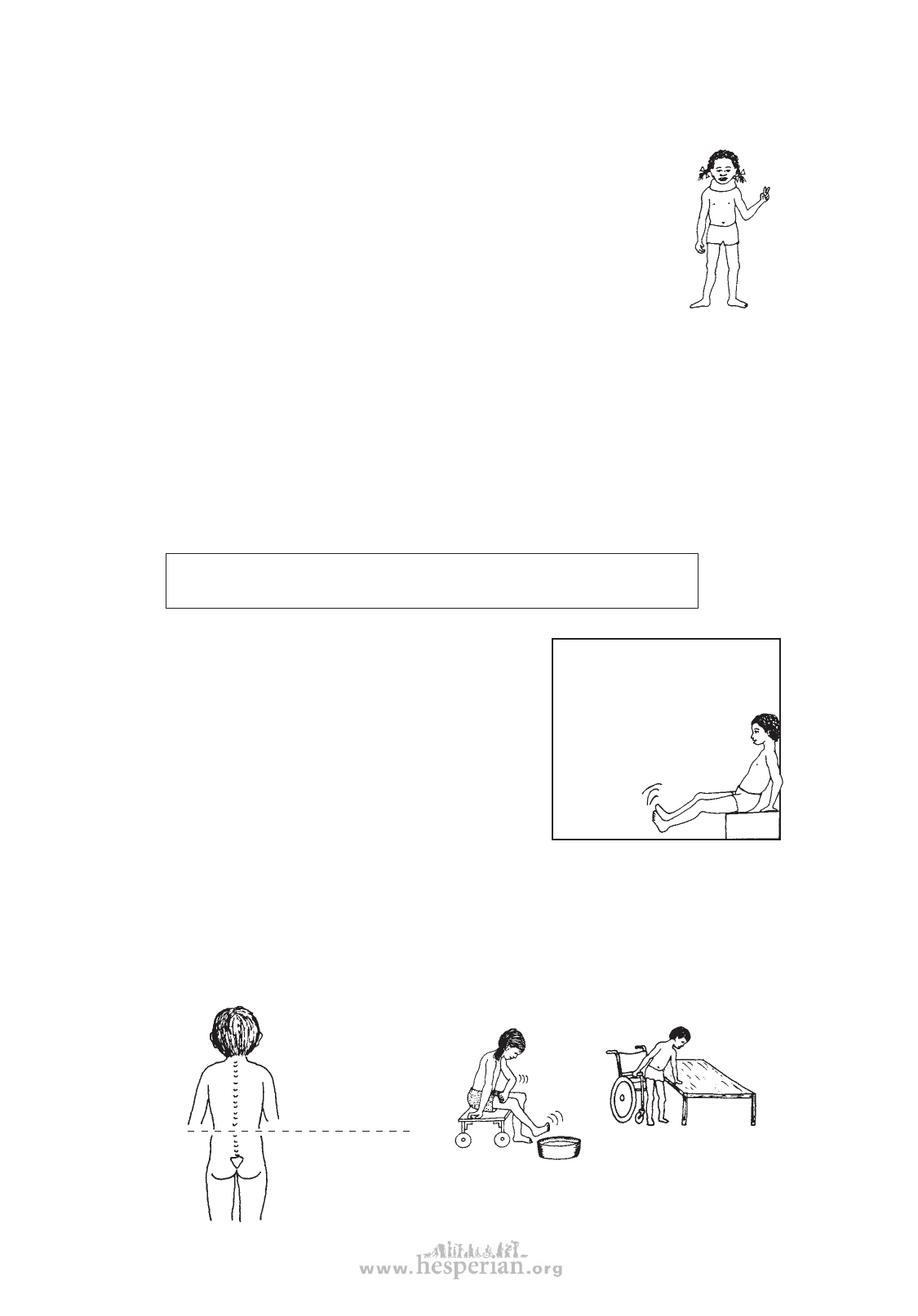
176 chapter 23
EARLY QUESTIONS THAT A SPINAL CORD INJURED CHILD AND
FAMILY MAY ASK
“Will my child always remain paralyzed?”
This will depend on how much the spinal cord has been damaged. If
paralysis below the level of the injury is not complete (for example, if the
child has some feeling and control of movement in her feet) there is a
better chance of some improvement.
Usually the biggest improvement occurs in the first months. The
more time goes by without improvement, the less likely it is that any
major improvement in feeling or movement will occur.
Occasionally surgery to release pressure on the spinal cord or nerves,
if done in the first hours or days following the injury, will bring back some
movement or feeling. But surgery done more than a month after the
injury almost never brings back any movement or feeling. Never agree
to such surgery unless at least 3 independent and highly respected
neurosurgeons recommend it.
It is very unusual
that a child who
is paralyzed by
a broken neck is
walking with a
neck collar in 6
weeks.
After one year, the paralysis that remains is almost certainly there to stay. As
gently as you can, help both the child and parents accept this fact. It is important
that they learn to live with the paralysis as best they can, and not wait for it to get better
or go from clinic to clinic in search of a cure.
It is best to be honest with the child and the family. Explain the
facts of the situation as clearly, truthfully, and kindly as possible.
“My child’s feet are beginning to move!”—spasticity
Immediately after a spinal cord injury the
paralyzed parts are in ‘spinal shock’, and are loose or
‘floppy’. Later (within a few days or weeks) the legs
may begin to stiffen—especially when the hips or
back are straightened. Also, when moved or touched,
a leg may begin to ‘jump’ (a rapid series of jerks,
called ‘clonus’).
This stiffening and jerking is an automatic reflex
called ‘spasticity’. It is not controlled by the child’s
mind, and often happens where spinal cord damage
is complete. It is not a sign that the child has begun
to feel where he is touched or is recovering control of
movement.
CAUTION: Sudden jumping or
stiffening of the legs when
moved or touched does
not mean feeling or
controlled
movement is
returning.
This is a
spastic
reflex.
Some children with spinal cord injury develop
spasticity; others do not.
level
between
1st and
2nd lumbar
vertebrae
If the spinal cord
injury is above the
level of the top edge
of the hipbone
(above the 2nd lumbar
vertebra) spasticity is
very likely.
SPASTIC
FLOPPY
If the injury is below
this level, paralysis
is usually floppy (no
muscle spasms).
Severe spasticity often makes moving and control
more difficult. However, the child may learn to use
both the reflex jerks and spastic stiffness to help her
do things. For example,
When the child wants
to lift her foot, she hits
her thigh, triggering the
jerks that lift the leg.
In lower back injuries,
the spasticity or stiffness
of the legs may actually
help the child stand for
transfers.
Disabled village Children